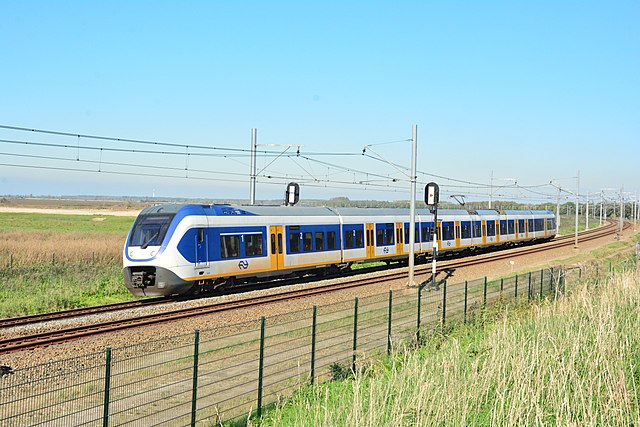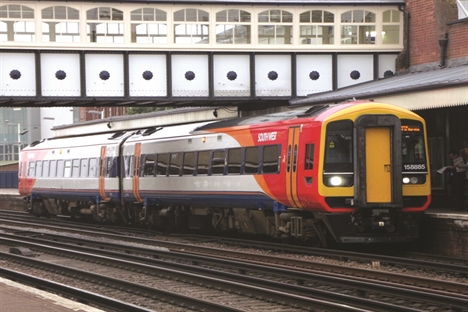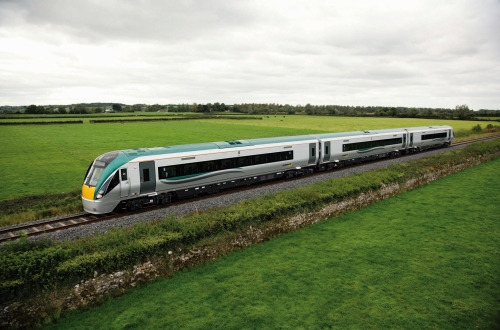tsm1072
Active Member
Is it possible that they will use dual-mode locomotives for the partially electrified routes (Kitchener and Lakeshore West) or will they have enough existing diesel locomotives that it isn't worth it?
I mean maybe, but that's kinda line specific. If we just look at the proposed service patterns that were present in 2018 Business Case, we had 3 lines that were fully electrified, and thus would've had EMUs run on both the frequent and infrequent sections - with Elec Locos only being used during rush hours. At the end of the day they were no different from say the LSW express services. Even today if we account for the LSE getting the bowmanville extension, that's still 2 lines that wouldn't be differentiable at all in the long term. Now maybe you can argue that 3 lines > 0 lines for visual clarity, but this is only a really minor benefit and still really raises the question of "what's the real difference between RER and Commuter" other than whether or not its electrified.My only concern with using all the DD until they get more EMUs is that it will be difficult to differentiate the services. One of the many benefits of using EMUs for RER sections is that it would be simple for the average passenger to know what service level the next train would provide.............single level for RER and DD for commuter. This way the public easily knows if the train coming in will actually stop at the station you want to get off at. It's much like when getting off at Kipling subway station you know what type of bus to take because TTC is red, GO is green, and Miss is yellow.
I think the least they should do is have a slightly different log so the commuter trains are GO and local trains are clearly labelled on every coach as GO RER.
GO already has these screens at most stations, as long as it's clear it should be sufficient.I think you address that with some "next train" screens.
Not that ridiculous - Zurich does it (underground yes)In which case the UP Express fleet is likely to be the first new EMUs purchased because putting an electric locomotive on the east end of those train sets would new ridiculous.
Not tight, perhaps by the time we need emus we will also feel like adding a bunch more infill - which then won't have a huge time penaltyThe suitability of loco-hauled BiLevel trains is heavily affected by the stop spacing, since they have fewer doors per passenger than single-level local trains.
So I decided to measure the stop spacings of the planned 15-minute local services, including the planned stations.
Of the 47 station-to-station distances, 26 are under 5 km:
View attachment 395356
The lines with the shortest average spacings are the Kitchener and Stouffville lines, which are likely going to be interlined with each other. This suggests that if DB were to purchase single-level EMUs, they would probably provide the most benefit on the Bramalea-Unionville local service.
View attachment 395357
So in Zurich an electric locomotive pulls a DMU with the diesel engines turned off? Is that just for a small part of the route that can only handle electric due to tunnel air circulation?Not that ridiculous - Zurich does it (underground yes)
They run frequent electric loco pulled trains into their tight airport tunnelSo in Zurich an electric locomotive pulls a DMU with the diesel engines turned off? Is that just for a small part of the route that can only handle electric due to tunnel air circulation?
Switzerland doesn't have any DMUs, their railway network is 100% electrified.So in Zurich an electric locomotive pulls a DMU with the diesel engines turned off? Is that just for a small part of the route that can only handle electric due to tunnel air circulation?









This one is an angry looking train.
I haven’t either but a lot of the ZF installs I have heard of were retrofits of engines with older engine models where the greatest bang for buck was expected, for example, Porterbrook had a pilot to install ZF on class 158 (NTA855 Cummins)Yes, Wikipedia is incorrect.
The most common transmission used with the QSK-19R is a Voith T312bre hydrostatic transmission. This is used in quite literally thousands of railcars around the planet.
For whatever reason, someone spec'd the UPX equipment with a ZF 6AP2500R, which is a 6-speed automatic transmission. This isn't an uncommon transmission, but I can't find any other applications where it's been mated to the same Cummins engine.
Dan






